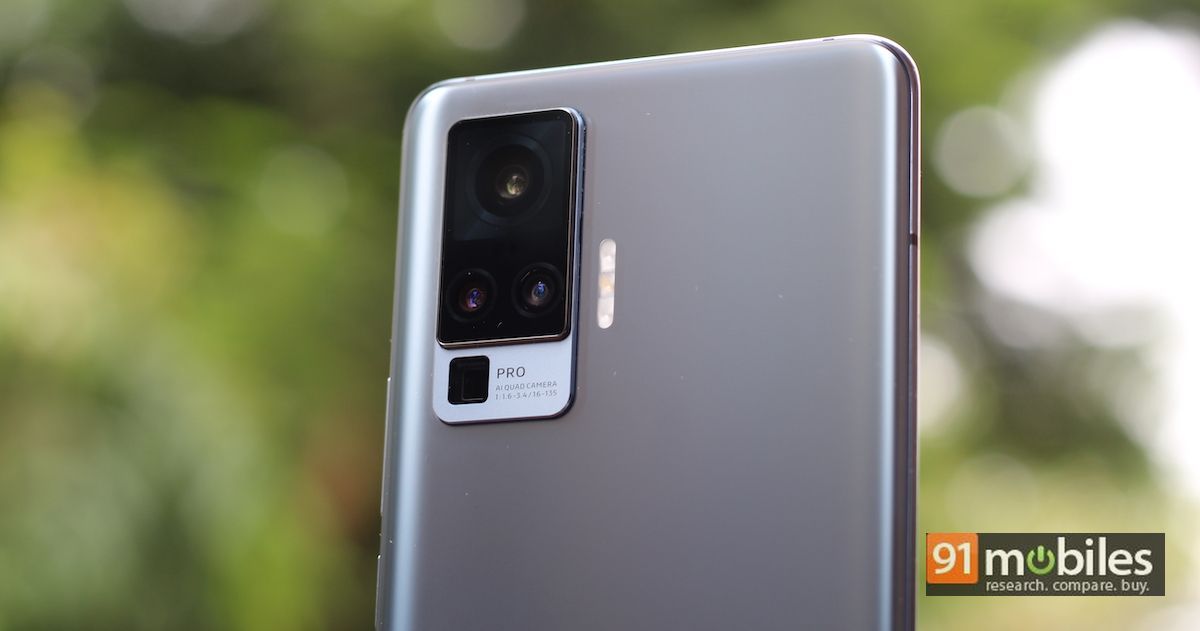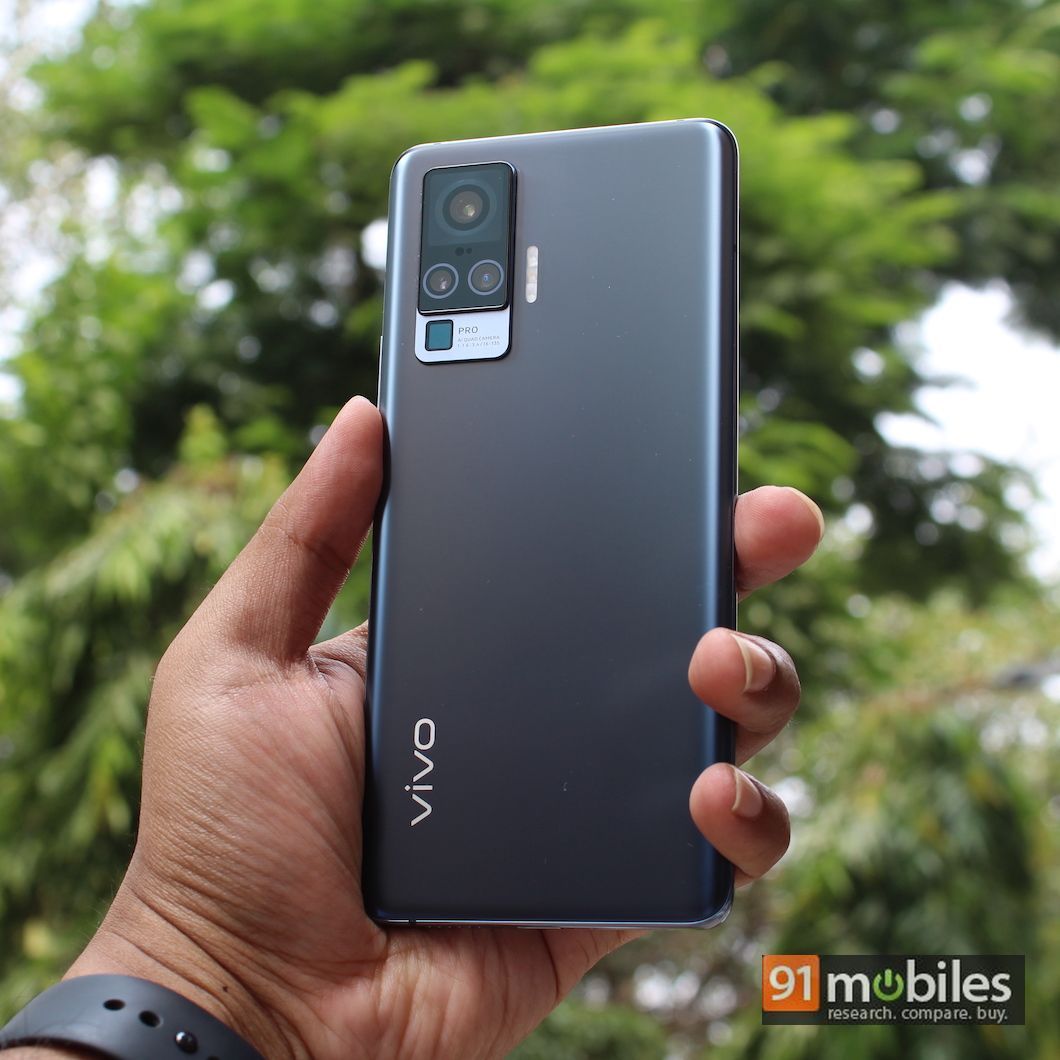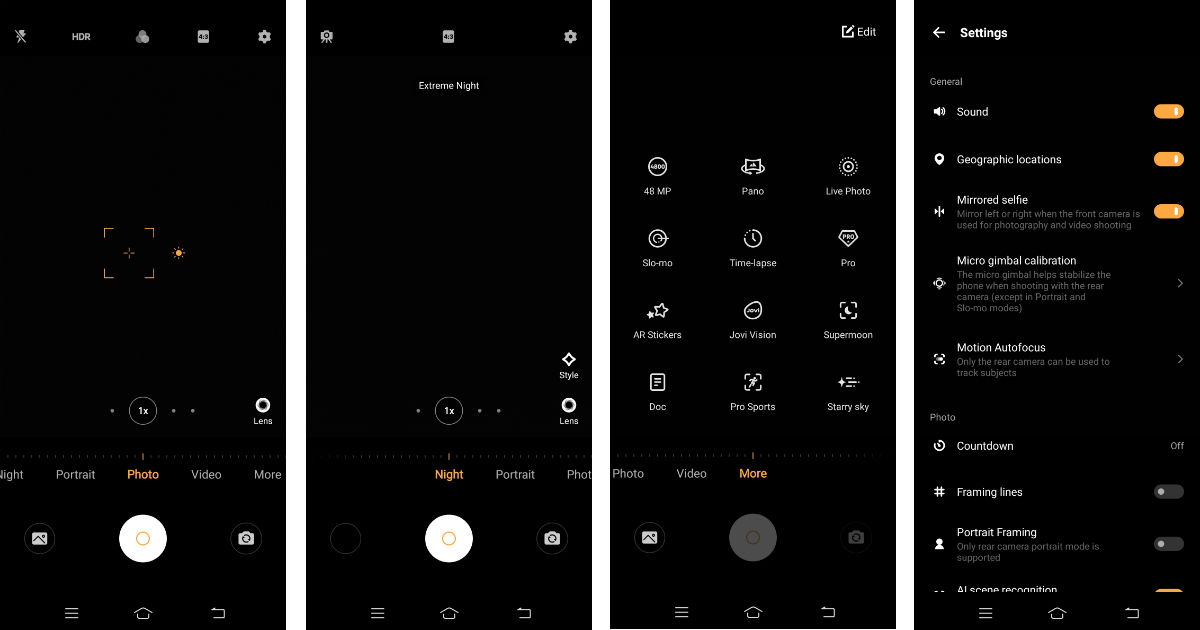
vivo has made a name for itself in India by launching dependable phones, with many of them boasting features for photography enthusiasts. The company hasn’t really ventured into the premium smartphone segment yet, but that has changed with the launch of the Vivo X50 series. The vivo X50 and X50 Pro are now in India and they mark the company’s entry into the premium segment. Both these smartphones tout attractive designs and powerful hardware, but what really makes them feel like all-round devices is the “professional-grade cameras”, as per the company.
The vivo X50 and X50 Pro sport frosted glass at the back and a COP technology allows for an almost bezel-less AMOLED display up front with a punch hole. vivo has packaged the phone in a sleek and slim profile, making the vivo X50 one of the slimmest and lightest 5G phones in India right now. The X50 Pro, powered by the Snapdragon 765G chipset, is particularly compelling. Additionally, the vivo X50 supports 33W fast charging and AI quad camera setups to top it all. It’s clear that the phones deliver on specifications and design, but we wanted to know just how good the “professional grade cameras” really are, especially on the vivo X50 Pro that boasts a special Gimbal Camera System.

The vivo X50 Pro features an AI quad camera system at the back that includes a 48MP Sony IMX598 primary sensor, an 8MP 120-degree wide-angle lens, a 13MP Professional Portrait lens, and an 8MP Periscope lens than can shoot 5x optical zoom and 60x digital zoom. The USP of the main camera is that it is backed by a Gimbal Camera System that aims to offer game-changing stabilisation to stills and videos, and an Extreme Night Vision mode for superb night shots. vivo says the micro gimbal system offer 3x better stabilisation than traditional OIS. On the front, the vivo X50 Pro gets a 32MP selfie camera. Additionally, the cameras are backed by tons of shooting modes to offer versatility.
Things look great on paper, but the question is, how does the vivo X50 Pro fare in real life. To put that to the test, we pitted the vivo X50 Pro’s cameras against some of the best camera phones in its class: the OnePlus 8 Pro, Xiaomi Mi 10, and Samsung Galaxy S20+. We tested these phones under different scenarios to see just how well the vivo X50 Pro performs against these flagships, and we were pleased with what we found.
Scenario 1 – Video stabilisation
The vivo X50 Pro’s micro gimbal system truly shines when it comes to videos. The stabilisation it offers is fantastic, especially while running when one expects to see a lot of shakes and bumps. All the phones in this comparison support OIS, but only the vivo X50 Pro backed by its gimbal system is able to deliver anti-shake angle correction better than the others. As you can see in the videos below, the Mi 10 shows some shakiness and colours look quite oversaturated. The Galaxy S20+ delivered better contrast, but the videos are quite shaky and exposure is not as balanced. The OnePlus 8 Pro does a decent job at stabilisation, but colours look unnatural. Finally, the vivo X50 Pro shows a relatively shake-free and smooth motion while running, and is able to deliver great colours and dynamic range.
Scenario 2 – Pro Sports mode
Despite the fast shutter speed on all these phones, not all of them are able to capture a moving object with absolute stillness and clarity. The Vivo X50 Pro comes with a dedicated Pro Sports mode that uses the gimbal camera system and motion-deblur algorithm to produce blur-free images of objects in fast motion. The Pro Sports mode on the Vivo X50 Pro also uses auto zoom to detect the ball in motion and a shorter exposure in order to capture a clear shot. In the comparison below, we can see that the Vivo X50 Pro takes the best still photo, revealing the ball in motion clearly. The same shot captured by the Samsung Galaxy S20+, OnePlus 8 Pro, and Mi 10 show the ball quite blurred in motion.
Scenario 3 – Night shots
The vivo X50 Pro, Samsung Galaxy S20+, Xiaomi Mi 10, and OnePlus 8 Pro all come with dedicated night modes that are quite impressive and show how far night photography on smartphones has come. In the comparison shot below, you’ll find that all four devices are able to offer good brightness and clarity at night time. However, we find that the vivo X50 Pro shows the best balance in brightness, contrast and colours, especially of the night sky. The other models hold up well, but they tend to overexpose the night sky making it seems as if the photo was taken in daylight. The low-light photo captured by the vivo X50 Pro looks more natural and has the best noise control among the devices. Thanks to the Gimbal Camera System, the Extreme Night Vision mode, and a large f/1.6 aperture, we were able to capture steady and bright shots no matter the time of the day. Not only does the Vivo X50 win in regular night shots, but it can also offer decent results in absolute darkness as well when Extreme Night Mode kicks in, which is quite impressive.
Scenario 4 – Zoom shots in daylight
Among the four smartphones, only the vivo X50 Pro supports up to 60x digital zoom. The Samsung Galaxy S20+ and OnePlus 8 Pro go up to 30x zoom while the Mi 10 can on shoot up to 10x zoom as it lacks a telephoto lens. As you can see in the images below, the vivo X50 Pro blows away the competition with its zoom camera. Even at 60x zoom, we can clearly see the vehicle’s number plate, something that none of the other phones are able to deliver even at 30x and 10x zoom.
Scenario 5 – Portrait shot in daylight
Under ideal daylight conditions, all of these phones will be able to deliver bright and crisp photographs with excellent dynamic range and colour reproduction using the high-resolution main camera. But how about when you want crisp portrait shots for a more dramatic effect? Getting the right bokeh shot with ideal background separation is not every phone’s cup of tea and we found the Vivo X50 Pro to deliver the best portrait shot thanks to its 13MP professional portrait lens. Bokeh shots from the OnePlus 8 Pro are often hit and miss with noticeable burring around the edges of the subject. The Mi 10 tends to blow out the background making the photo look overexposed. The Galaxy S20+ Live Focus mode does a pretty good job at bokehs with good brightness and detail. However, the Vivo X50 Pro delivers the most dramatic portrait shot with excellent and uniform background blur (including the railing behind the subject) with clear subject separation.
The above comparisons are just a few scenarios that we took into consideration to show you the range of the vivo X50 Pro. The phone’s camera system can do so much more than this as it is loaded with various shooting modes that will keep you engaged and pique your interest if you’re a professional photographer. You get modes like Supermoon that uses zoom and AI to capture that perfect moon shot. There is a Starry Sky mode that can capture the stars at night provided you’re away from city light population.
The night mode comes with a bunch of interesting filters like Cyberpunk, Black and golden, Blue ice, and Green and orange to add some spunk to nightscape shots. The wide-angle lens supports night mode and can be used to capture macro shots from as close as 2.5cm. You can also capture night portrait shots and there’s a dedicated Pro mode that allows you to tweak the ISO, white balance, and so on. Even the video mode gets a bunch of features such as motion AF tracking, Pro Sports mode, Audio Zoom, 3D sound tracking, and so on.

More importantly, all of these various modes and features are easily discoverable and usable thanks to an intuitive and easy-to-use camera UI. You have the ability to swipe through a carousel of modes with easy to recognise icons and options on screen to select the exact mode that you’re looking without wasting time.
It’s worth noting that the vivo X50 Pro is able to achieve these results with the Snapdragon 765G chipset’s imaging processing. The other three models are powered by the flagship Snapdragon 865 SoC and still fall behind the vivo phone in some scenarios. vivo has invested a lot of time and effort on the camera system on the X50 Pro (which is the reason behind its premium price) and it seems to have paid off. The comparison makes it clear that the vivo X50 Pro can deliver great shots and smooth videos, edging out its key rivals. From its stunning design on the outside to a power-packed performance inside and some exceptional camera engineering, the vivo X50 Pro helps the company make a solid entrance into the premium segment.
Brand Story
July 24, 2020 at 09:11AM




0 Comments